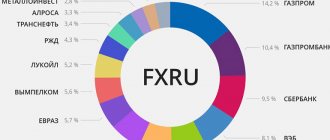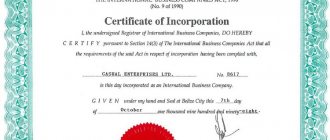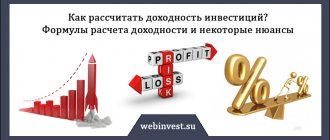Invest in IFC and KPK
Bank deposits have long been the only available way to invest money easily and safely. Banks consistently pay interest, and to conclude an agreement you just need to go to the branch and sign the documents. On the other hand, over the past couple of years, the doors to the stock market have opened even wider, and safe bonds with higher yields have become a trend. The question arises: bank deposit or bonds – what to choose?
What is a Eurobond
The prefix “ euro ” does not change the essence of this instrument. The meaning of a Eurobond is that its issuer attracts borrowed funds , guaranteeing the buyer a certain percentage (coupon income) as a reward for using the money. If you understand what Eurobonds are, that is, what they are in simple words, they can be called a loan in foreign currency .
A Eurobond differs from a regular bond only in that it is denominated in a currency foreign to the borrower . This is the only way Eurobonds differ from Russian bonds. For other countries the same dependence remains. If, for example, bonds are issued in Japan in yen, these are simple bonds. If bonds in rubles are issued in the same country, they will be considered Eurobonds for the Japanese borrower.
The key advantage of Eurobonds is their yield , which is several times higher than the bank interest rate. At the time of preparation of the review in dollars, the maximum rate is 2.41% (according to banki.ru). Other offers are much worse; there is a stated yield of around 0.3-0.4%.
For comparison, in the USA in 2021, inflation at the end of the year was 2.28%. That is, taking into account the decline in the purchasing power of the dollar, the real return on the deposit would be, at best, 0.1-0.2%. Dollar bonds, even taking into account inflation, could bring in more than 5% income.
Do I have to pay taxes on bonds?
Since the activity is recorded by government agencies, you will have to pay tax for such activity. As of November 2021, taxes on bonds are levied for:
- Total income. After interest is calculated, you will have to pay 13%;
- If at the time of closing the bond its value has increased, then you will also have to pay 13% on this difference;
- Coupon income is not taxed.
Based on the foregoing, it is necessary to calculate the potential profit minus tax liabilities. For example, with a yield of 9.5%, after taxes, the net profit will be only 7.3%.
What's better? Foreign currency deposits VS Eurobonds
We will make a comparison based on 4 key points.
- Interest rate . Eurobonds are at least 2-3 times higher than the best offer from banks. For corporate bonds, the yield can be 3-5 times higher or even more.
- Deposit Insurance Agency Limit . In banks, money is protected. So far, the upper limit of insurance is set at 1.4 million rubles. (it is possible that in the near future the threshold will be increased to 10 million rubles). In the case of bonds, you can work with issuers that are as reliable as banks. The risk of default on bonds issued, for example, by systemically important corporations is almost zero.
- Conversion of funds. If the bank goes bankrupt, the DIA will compensate for the cost of the deposit (up to 1.4 million rubles), but money will be paid in rubles. In this case, the ruble exchange rate at the time of the occurrence of the insured event is accepted as the calculated one. If the bank managed to add interest to the body of the deposit before this date, they are also insured, but the low yield may not cover the loss due to unfavorable changes in the exchange rate. In our example, the investor could lose more than 20% due to this. DIA insurance compensated for the deposit in dollars; the loss was ensured by the strengthening of the ruble against the dollar.
- Inflation . The dollar, euro and other currencies also depreciate over time. In 2021, annual inflation in the USA reached 2.28%, the best offer from banks exceeds it by 0.1-0.2% - this is real income.
- Early closure of the deposit . Banks hedge their bets and impose penalties; usually, in this scenario, most of the income is eliminated. You will be returned the deposit amount + a meager percentage compared to what you expected. Bonds can be resold at any time; the accumulated coupon income will not go anywhere .
For convenience, I will compare both tools in tabular form.
| Bank deposit | Eurobonds | |
| Interest rate | The ceiling is 2.0-2.4%, barely covering inflation | Even for super-reliable ones, the percentage is 2-3 times higher. For example, according to VEB.RF-10-2023-ev (issuer - Vnesheconombank), the coupon is 5.95% per year |
| DIA insurance | Up to 1.4 million rubles, high probability of increase | DIA does not insure securities |
| Conversion of funds | Occurs forcibly upon the occurrence of an insured event | The repayment date is known exactly |
| Inflation | The interest on the deposit “eats” almost 100% | Profit is several times greater than currency depreciation |
| Early closure | The bank returns only the body of the deposit | Accumulated income is not lost, resale of Eurobonds is not limited |
What is the difference between public and exchange-traded OFZs?
To begin with, we should identify the key difference, because of which you can immediately opt for public bonds. It lies in the fact that people's OFZs must be registered. Exchange-traded bonds may not have government control, which increases the risk of losing investments several times.
Features of people's bonds
The convenience is that you do not have to understand interbank trading or open a brokerage account. Bonds are purchased from the following banks:
- Sberbank;
- VTB;
- Post Bank.
The key feature is that you will have to purchase at least 10 bonds, since this is the minimum possible deposit. The price of 1 bond is 1000 rubles, so be prepared to spend at least 10 thousand rubles for a period of 12 to 18 months without the possibility of closure.
Note! If you decide to terminate your relationship with the bank before the due date, you will not be charged interest, and in some cases, the invested funds will not be returned.
Among the main features it is also worth highlighting:
- High reliability. Banks have been showing positive profitability for many years, which is why the level of mistrust is reduced to zero;
- Popularity. Selling such a financial instrument is extremely simple due to high demand among buyers;
- Consistency. A large number of bonds are traded on an ongoing basis.
All these advantages attract a large number of newcomers, thanks to which the cost regularly increases. But there are also disadvantages, such as:
- Small income. Such deposits are slightly larger than bank deposits, which is why many choose the second option. Yield can be increased if you purchase bonds through an individual investment account, but then you will have to wait 3 years, during which the funds cannot be withdrawn;
- Potential danger of sanctions. If foreign investors are limited in their ability to purchase OFZs, then increasing sanctions will significantly reduce profitability, which is why many simply will not earn money.
It is important to understand what the cost of public bonds depends on in order to correctly calculate investments and potential profits.
Features of exchange-traded bonds
Exchange-traded bonds do not require control from government agencies. Therefore, they acquire higher profitability. Thanks to this solution, it is quite possible to earn from 12 to 20% per annum. However, the risks increase several times.
Among the main advantages it is worth highlighting:
- High profitability;
- Possibility of increasing income through IIS;
- Liquidity from foreign traders.
There is one drawback, but a significant one - the risk of losing all your funds is extremely high. Brokers do not provide any guarantees, which is why not everyone agrees to invest.
Experienced speculators know that exchange-traded OFZs are more profitable, but deep analytics will be required in order to consistently receive funds.
Types of Eurobonds and their parameters
We’ll figure out how to buy Eurobonds for an individual a little later. For now, let’s take a closer look at the features of this type of investment instrument.
Classification of Eurobonds
The division into groups is determined by the selected criteria. Depending on the issuer, there are:
- Government Eurobonds. Individual subjects of the Russian Federation can also borrow money in this way. As a rule, the volume is limited to 30% of budget revenues.
- Municipal.
- Corporate Eurobonds . They are produced by separate companies. The yield on them is higher than on government ones, but the risk also increases proportionally. Eurobonds of Russian companies are most often issued in dollars and euros.
According to the type of repayment, Eurobonds are divided into:
- Securities with the impossibility of early repayment. The deadline for the borrower to repay the debt is set at the time the bonds are issued. Repayment is not possible before this date.
- With an option to buy or sell. In the first case, the issuer has the right (option) to repay the loan early (buy it back) from you. In the second, the bondholder can demand repayment of the debt at predetermined time intervals. There are subtypes with buy/sell options only.
- The rarest type is with the possibility of early repayment from a special fund . The issuer regularly makes contributions to a special account and then buys back the bonds.
Depending on the frequency of coupon income accrual, there are:
- Options with accrual of profit once a year .
- Less often this happens twice a year .
- Quarterly accrual is typical for securities with floating interest rates.
Based on coupon type, Eurobonds are classified into:
- Fixed income securities. Its size is agreed upon in advance.
- Zero coupon bonds.
- Eurobonds with floating rates . Typically calculated as LIBOR + a certain premium.
If the coupon is zero, then the buyer’s profit is formed by the difference between the purchase and redemption prices:
- Deep discount bond - in this case, securities are purchased at a price much lower than the cost at maturity. Depending on the term, the discount can reach 60-70%.
- Capital growth bond – the price at the time of purchase is equal to the face value, but repayment is guaranteed to occur at a higher price.
What types of securities are there?
There are different options for classifying securities. Let's look at the most common of them.
First of all, two types of securities can be distinguished:
- Primary securities (or main) are securities that are secured by any assets and give the owner certain rights to them. For example, stocks, bonds, bills, certificates of deposit, etc.
- Secondary securities (or derivatives) are securities related to other primary securities and giving the owner certain rights to them. For example, forwards, futures, depositary receipts, warrants, options, etc.
Based on the method of issue, two types of securities can also be distinguished:
- Documentary securities are issued in the form of a document (on special forms with various degrees of protection).
- Book-entry securities are issued electronically, in the form of entries in electronic registers.
Today, most underlying and derivative securities are issued in book-entry form.
Also, all securities can be divided into 2 types according to the principle of urgency:
- Term securities are securities valid for a certain period, after which the rights implied by them cease to be valid.
- Perpetual securities are securities that are valid indefinitely; the rights they imply never expire.
Now let's look at these two types of securities in more detail.
Basic parameters of bonds
When evaluating Eurobonds, pay attention to the following parameters:
- Nominal cost . This is the payment that you will receive when the issuer redeems the Eurobonds. For example, for government Eurobonds rus-28 the par value is $1000. If you have 10 securities of this type, then in addition to regularly paid coupons you will also receive $1000 x 10 = $10,000 when you redeem the Eurobonds.
- maturity date – indicates when the issuer will repurchase the Eurobonds and repay the loan.
- Annual return. It is set as a percentage of the face value, for our example (rus-28) it is equal to 12.75%, that is, the holder of these Eurobonds receives $127.5 per year. Since coupons are paid out once every six months, the size of one is equal to $63.75.
- Accumulated coupon income. Shows what amount is due to the Eurobond holder as of the current date, constantly recalculated using the formula NKD = N x C x T / B. In it, N is the par value , C is the annual yield in fractions of a unit , T is the time in days since the last coupon was accrued , B is the number of days in a year . For our example, 165 days have passed since December 24, 2019 (the date of the previous coupon accrual), and the annual income is 0.1275, which means the cash flow = $1000 x 0.1275 x 165 / 365 = $57.63 . We see the same number in the description of the Eurobond; the slight difference is explained by rounding in the calculations. If the holder of the securities sold them right now, the NKD would not be lost and the money would be credited to his brokerage account.
- Coupon payment date. On this day, money is credited to the Eurobond holder's account.
How to choose OFZ?
The acquisition of OFZ is an important process that affects the increase in capital in the next 12-18 months.
Here it is important to rely on how long you will need funds. For example, if you want to invest only for a year, then purchase OFZ 26212. They arrive in January-February, and their duration is 1 year without the possibility of extension.
The choice of bonds is quite large, so everyone will choose the right option for themselves. You cannot invest for less than a year. Therefore, get ready to part with at least 10 thousand rubles for this period.
Advice! Pay attention to receiving coupons. After all, your passive income depends on it. If you distribute the payment amounts evenly, then it is convenient to invest the funds received in additional bonds and significantly increase your capital.
Taxation and Eurobonds
Starting from 2021, the Russian Federation has eased the tax burden for investors investing in securities of the Ministry of Finance of the Russian Federation. For such instruments, personal income tax is not charged on coupon income. After redemption, tax is charged only on the possible profit generated due to changes in the exchange rate.
For example, 10 government Eurobonds with a par value of $1000 were purchased at a USDRUB rate of 67.00. In 3 years, $1,500 worth of coupons were received, and at the time of redemption, the USDRUD rate rose to 70.00. Due to this, 30,000 RUB of profit was added to $1,500, and you will need to pay 13% on it. In this example, personal income tax will be 3900 RUB.
If, under the same conditions, the rate fell to 65.00 RUB, then personal income tax would not have to be paid. If the Eurobonds were not state-owned, but corporate, then personal income tax is charged both on coupons, and on possible profit due to changes in the exchange rate, and on the discount. This is compensated by the higher yield of corporate Eurobonds.
There are a number of loopholes :
- If corporate securities were purchased on the Moscow Exchange and held for 3+ years , then the Tax Code of the Russian Federation provides for a tax deduction . It applies to income received from the sale of securities and is calculated using the formula N x 3 million rubles, where N is the number of years of ownership of the securities. That is, after 3 years, income from the sale of Eurobonds in the amount of up to 9 million rubles. not subject to personal income tax.
- If an IIS type B is opened , then all income received through trading operations is exempt from personal income tax.
The above is true for residents of the Russian Federation . Otherwise tax:
- It may be zero if a Russian tax agent (broker) is not involved in the payment of income. The recipient of the funds will deal with the tax authorities of his country himself.
- It can reach 30% if a Russian broker is involved, who is a tax agent of the Russian Federation.
It is not profitable to resell Eurobonds frequently . As for which securities are best to work with, from the point of view of taxes, the optimal choice is those in which the Ministry of Finance of the Russian Federation is the issuer. Previously, an article was published about what government bonds are, be sure to read it.
PS
Among other things, the law provides for the granting in 2021 of the Government of the Russian Federation the right to issue regulations on extending the deadlines for paying taxes and filing tax returns. Let's hope that the results of the innovation will also be the postponement of the deadline for filing tax returns in Form 3-NDFL for 2021 to a later date (the current filing deadline is April 30, 2021).
Special thanks to Alexander Guskov, Head of Tax Practice at IBFS united, for his invaluable contribution to the preparation of the article.
Examples of Eurobonds and calculation of potential earnings
Let's start with examples of government and corporate Eurobonds; for convenience, I will present them in table format.
| Name | Denomination, $ | Payment frequency, once a year | Income, % per year | ISIN |
| Russia-2028-7t | 1000 | 2 | 12.75 | XS0088543193 |
| Russia-2035 | 200 000 | 2 | 5.1 | RU000A1006S9 |
| Rosneft-2-2022 | 1000 | 2 | 4.199 | XS0861981180 |
| Gazprom Neft-05-23 | 1000 | 2 | 6 | XS0997544860 |
| Evraz-11-2022 | 1000 | 2 | 6.75 | XS1405775377 |
| VEB.RF-10-2023 | 1000 | 2 | 5.942 | XS0993162683 |
Let's assume the investor's capital is $10,000 . Let’s estimate the estimated earnings for 3 different Eurobonds and start with rus-28 :
- For convenience of calculations, we assume that the securities were purchased on December 25, 2021, immediately after the coupon was paid. The price was +74% of the face value or $1740 for 1 security. For the starting $10,000, 5 Eurobonds are purchased.
- If the investor holds the securities until maturity , he will have time to receive 17 coupon payments of $63.75. In total, earnings during this period will be $5,418.75.
- 5 x $1740 = $8700 was spent on purchasing the bonds, but upon redemption the investor will receive only 5 x $1000 = $5000, a loss of $3700 .
- Total income in this scenario would be $1718,75. Not the most profitable option. The main disadvantage of this example is that Eurobonds are too expensive and there is not much time left until maturity.
Let's move on to corporate ( Evraz-11-2022 ), the starting amount is the same - $1000:
- Let’s assume that at the very start, 10 securities with a face value of $1000 each were purchased.
- Before maturity, the investor will have time to receive 11 coupons of $33.75 each.
- During this time profit will be $3712,50 or 26.93%.
And one more example, now with Gazprom :
- Securities are not purchased immediately after placement, but after 6 years. At the time of purchase, quotes exceed par value by 12.5%, 8 Eurobonds were purchased for $10,000.
- For the remaining period until maturity, the investor will receive 8 coupons of $30 each. The total income is $1920 .
- Upon repayment, it is formed lesion at $125 x 8 = $1000. As a result, the earnings are not $1920, but only $920.
Here are a couple of conclusions. Consider not only the interest rate offered by the issuer, but also the period remaining until maturity and the price of Eurobonds. It may turn out that high-yield securities turn out to be unprofitable due to the fact that they are traded at a large premium and there is little time left until maturity.
How to buy Eurobonds
As for how to invest in Eurobonds, you can buy this type of securities both in Kwik and through brokers’ own applications. For example, Tinkoff does not use specialized software, but Eurobonds are still available.
Working with Tinkoff Investments
The instructions look like this:
- You need to open a brokerage account ( an IIS will do ) and log in.
- Select the desired asset from the catalog. A list of split Eurobonds is available here . The yield and maturity date are indicated.
- The lot volume is equal to 1 bond.
The price will be increased by 0.3% . This is done to ensure that the order is guaranteed to be executed regardless of price fluctuations. To confirm the transaction, you need to confirm the purchase by entering the code from the SMS message.
You can also buy Eurobonds using your smartphone . The functionality is the same; in the list of available assets, you just need to select the section with Eurobonds, indicate the volume of the transaction and confirm it.
Buy Eurobonds through Tinkoff
Purchasing through QUIK and the My Broker application
In the Quick terminal, buying Eurobonds is no different from working with ordinary shares. The only caveat is that you must not make a mistake when choosing securities; there is no corresponding item in the current trading table. Instead, you will come across the designation “Bonds (settled in USD)” or in EUR, these are the tools you need.
Then everything is standard:
- Select an asset.
- Open the stock glass.
- We send the application. The price is indicated not in currency, but as a percentage of the face value, for example, 100.5.
Purchases are also possible through the “My Broker” mobile application. To buy, you need to go to the “Quotes” section, select the desired instrument, set the purchase volume and confirm the transaction. Money is debited from the card.
Open an account in BCS
I recommend that beginners go through an educational program on where it is better to open a brokerage account. There are many good companies. Based on my own experience, I can recommend Tinkoff or BCS. I will summarize the main conditions for them in a table.
| Company | BKS | Tinkoff investments |
| Minimum deposit | from 50,000 rub. | Unlimited , you can even buy 1 share, they recommend starting from RUB 30,000. |
| Transaction fee | At the “Investor” tariff – 0.1% of the transaction amount, at the “Trader” tariff it is reduced to 0.015% | 0.3% for the “Investor” tariff |
| Additional charges | If the account has less than 30,000 rubles - 300 rubles/month. for access to QUIK and 200 rub./month. for access to the mobile version of QUIK, | — |
| Account maintenance cost | 0 RUR/month on the “Investor” tariff, on other tariffs, funds are debited only if there was activity on the account this month | Free for the "Investor" tariff |
| Leverage | Calculated for each share, within the range of 1 to 2 – 1 to 5 | Calculated for different instruments, the calculation is linked to the risk rate |
| Margin call | Calculated based on the risk for each security | Depends on the asset |
| Trading terminals | My broker, QUIK, WebQUIK, mobile QUIK, MetaTrader5 | The purchase of shares is implemented like an online store, professional software is not used |
| Available markets for trading | Foreign exchange, stock, commodity markets, there is access to foreign exchanges | American and Russian stock markets |
| License | TSB RF | TSB RF |
| Open an account | Open an account |
Types of bank deposits
It is worth considering what varieties exist in the modern financial industry. They differ in terms, duration and interest rate, as well as a number of other factors. Based on the period of placement of funds, there are two types:
- Time deposit. In this case, the client places money or valuable property for a certain time, from 1-2 months to several years; it is possible to withdraw funds before the specified period, but in this case you will have to face a complete or partial loss of accumulated interest.
- Deposit on demand. Essentially, it is a type of current client account from which the depositor can withdraw all or part of the amount at any time. The disadvantage of such a deposit is considered to be significantly lower rates. Since the bank does not know at what point the client will claim his money, he strives to minimize the risk of unplanned expenses and protect himself from losses.
According to the method of application, deposits are divided as follows:
- Savings. The main objective of such a deposit is to preserve value and generate some profit.
- Cumulative. Such a deposit is opened to collect a large sum of money. For example, to carry out a large transaction or purchase, in most cases the account can be replenished during the placement period. Usually, when registering, the client indicates what the funds are intended to be spent on.
- Settlement. In this case, you can usually withdraw a partial amount without losing interest. In this case, the depositor’s account must remain the amount the minimum amount of which is specified in the agreement. If the client withdraws more than this amount, interest will not be paid to him or will be calculated partially. Like the previous one, this deposit is replenished.
- Special. Banks offer such deposits for certain groups of clients. For example, students, workers in certain industries, retirees. Income is transferred by the employer, Pension Fund or educational institution to the client's open account, from where a certain amount can be withdrawn, and the balance is capitalized in the form of accrued interest.
For certain categories of citizens, banks provide special conditions for deposits
Investing in mutual funds
Mutual investment funds are convenient because their composition is selected by the manager. The investor can only buy shares and wait.
BCS has 2 main mutual funds, the shares of which include Eurobonds. The first is BKS Osnova , a fairly old fund, operating since 2003. The price of a unit of this mutual fund has increased by more than 400%. The management strategy is not high risk. The cost of a share starts from 50,000 rubles.
BCS Eurobonds specializes in Eurobonds and is positioned as a replacement for a foreign currency deposit. The mutual fund is young, launched in June 2021. During the pandemic, the price of the unit dropped significantly, but then a confident recovery began. There is a high entry threshold - from $15,000 per share.
BCS has other interesting mutual funds; I will give the conditions for them in tabular form.
| Name of mutual fund | The basis | Russian shares | Perspective | Russian Eurobonds | International bonds |
| Beginning of work | 26.12.2003 | 21.02.2005 | 10.05.2000 | 04.06.2019 | 04.06.2019 |
| NAV as of April 23, 2020, million rubles. | 872,07 | 506,459 | 527,129 | 138,73 | 593,314 |
| Growth of the share from its inception to 04/23/2020 | 400,34% | 454,38% | 1032,04% | 4.43% (in USD), about 20% in RUR | -4.69% (USD), increase 8.62% in RUR |
| Manager's commission | 1,5% | 3,9% | 3,9% | 1,0% | 1,5% |
| Depository fee | 0,3% | 0,3% | 0,3% | 0,5% | 0,5% |
| Minimum investment amount | 50,000 rub. first time, 10,000 rub. – second and subsequent | 1 million rub. or $15,000 | |||
| Open an account in BCS | |||||
Risks when investing in Eurobonds
I can highlight several dangers that await an investor in Eurobonds:
- Technical default – payments are maintained, but the schedule is violated.
- Complete default is the most unpleasant thing; payments stop.
- Changes in exchange rates . Under unfavorable circumstances, income in USD may turn into a loss in rubles.
It will not be possible to completely eliminate the risks, but we can at least reduce them. I recommend excluding subordinated bonds from the portfolio - securities issued by banks.
Remember 2021, then Binbank, Promsvyazbank and Otkritie fell under reorganization. According to the current rules, if capital adequacy falls below the threshold or the DIA begins to work with a financial institution to prevent bankruptcy, then the subordination is simply written off. In theory, they could be converted into shares, but most of the subordinated bonds of the Russian Federation are non-convertible . As a result, those who invested in them simply lost their money completely. You can filter such securities on rusbonds.com and through the MICEX. Read the description of the bond and do not mess with the subords .
Misconception
People often say that it is better to choose a deposit, since the funds in the bank accounts are insured, and if something happens, the money will be returned. Bonds are riskier and have been deceived by the government more than once. You need to understand that the Ministry of Finance, as a guarantee, is at a higher level of the hierarchy, and if there are problems in the country, there will be a negative result for both bank depositors and OFZ buyers.
Of course, after you master the field of investing, you can add riskier instruments to your portfolio. For example, blue chip corporate bonds bring higher profitability; you can find a profit of 10%. Even buying bank bonds, profitability increases to 15%. But these options are riskier. If desired, you can add stocks that bring greater profits over a long time period. This is only later, when you feel the ground under your feet.
As the wise Warren Buffett says, the main rule of investing is not to lose money. If during a major crash you lost 50% of your capital, you would need a profitability of 100% to catch up. Such a tool is difficult to find. In addition, when we reinvest returns, we gain leverage in the form of compound interest.
FAQ
Is it possible to buy Eurobonds on an IIS account?
Even necessary. For more or less significant amounts, it is better to use type B , which provides exemption from personal income tax on profits received through trading operations. You top up your account in rubles, then RUB is converted into foreign currency, and Eurobonds are purchased with it. They are then sold or redeemed and USD or EUR are converted into RUB and withdrawn back to the bank account.
How does taxation work for individuals?
For state Eurobonds, personal income tax is paid only if income is generated due to exchange rate differences. For corporate – and from coupon income. You can get a tax deduction if you hold securities for more than 3 years.
I have a sufficient amount in EUR, I want to buy Eurobonds denominated in EUR, how can I avoid conversions?
Open a foreign currency account at a bank, then transfer funds to a brokerage account (opened in the same currency). With this scheme there will be no unnecessary conversions.
Will there be conversion if the money is in euros, but I buy bonds in dollars?
If the currencies are different, then you cannot do without conversion.
Summary
Eurobonds cannot be considered a solution to all investor problems. Risks of issuer default remain, and changes in exchange rates can also greatly affect profitability. But Eurobonds are the only way to get the maximum return in foreign currency . According to this criterion, bank deposits are inferior by more than 2 times. Considering the behavior of the ruble in recent years, I consider it justified to convert at least part of the funds into foreign currency and invest in Eurobonds. There is a high probability that in the future you will make a profit both due to coupons and due to the next weakening of the ruble. Moreover, for this you do not need to be a qualified investor or have a multimillion-dollar capital.
For beginners, I recommend reading the post on how to buy shares for an individual in Russia. You will work with Eurobonds according to the same scheme. In the comments, be sure to share your experience of working with Eurobonds. If something remains unclear, ask questions - I will try to answer everyone. And don’t forget to subscribe to blog updates, so you don’t miss the release of new materials. With this I say goodbye to you. All the best and good luck in investing!
If you find an error in the text, please select a piece of text and press Ctrl+Enter. Thanks for helping my blog get better!








